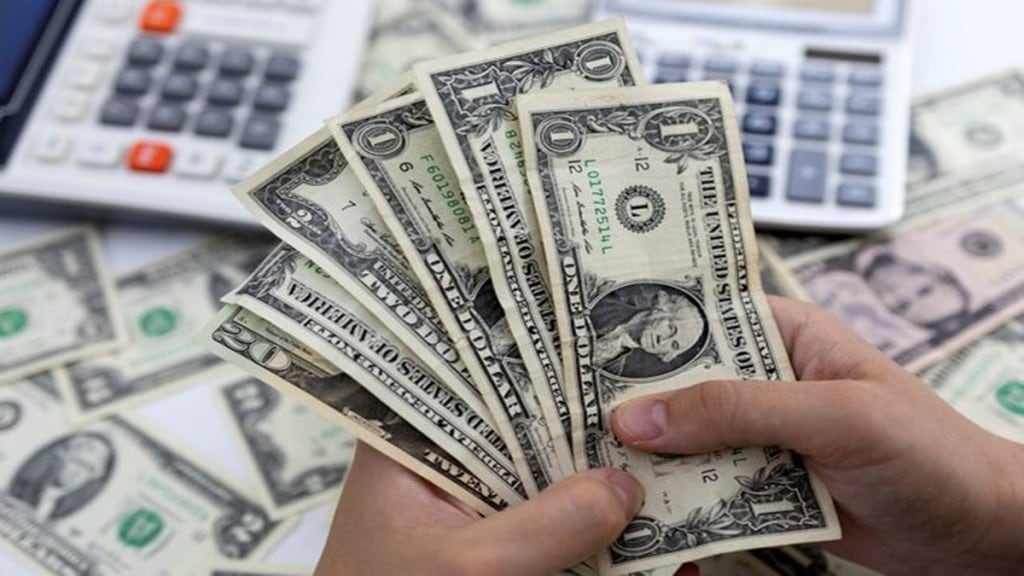By Jamal Mecklai
The dollar has corrected quite dramatically since January 20 following the old adage, “buy the rumour, sell the fact”. It had been rising steadily (by about 6%) since September last year when it began to appear that Trump would win the election and, on the day he took office, it turned sharply lower.
The DXY is now down more than 2.5% in less than a week, and technical analysts are scratching their heads as they see a possible run much lower as any further decline could open up an expanding range of head and shoulders patterns that could take the DXY down all the way to below 100. If, for instance, it was to fall a little more, correct upwards slightly, and then fall below the neckline that would be formed at 106.90, it would open the technical road to a decline to 103.80; in turn, this could set up another head and shoulders with the head at 110 and the drop aimed at around 97.
To be sure, technical analyses, like any “scientific” analysis of markets, or, for that matter, anything else, often turn out to be full of holes. But I point this out since it is in sharp contrast to most widely held views, and in markets, as (again) in life, you need to recognise that anything can happen.
Turning to the US economy, it has been going from strength to strength, even before Trump’s America first policies have seen the light of day. In reflection, the Dow has been on a wild tear and is approaching its all-time high, having risen by over 3% since Trump took office. The general consensus is apparently that the stronger US economy would attract and sustain investment flows. To be sure, inflation remains problematic and the bond market, while it corrected hopefully (with yields dipping from their recent peaks), remains on guard.
Of course, there is no hard and fast market rule that if an economy is strong, its currency will naturally be strong as well. And although it is certainly possible the dollar may turn upwards again, I note that the Orange Oracle has loudly been demanding lower — and much lower — interest rates, since he knows much more about interest rates than the Fed, who is understandably concerned about the slow progress on bringing inflation under control.
Trump’s bellowing on interest rates recalls (most recently) Turkey’s Erdogan who, in 2021, fired his central bank governor for raising interest rates to control inflation. The new governor brought rates down below 10% bowing before Erdogan, but, by 2023, rates started to rise again, peaking at near 45% as inflation climbed to above 60%. I was in Istanbul recently and everyone (and his sister) was super-concerned about the cost of living.
Now I know that this sounds like science fiction in the US context, but it provides an indicator of what can happen if institutions are overridden. And while US institutions are, as yet, still sound and strong, Trump is Trump and he knows best.
Coming back to the dollar, I note that in markets nothing goes on in one direction forever and the fact is that, on a trade-weighted basis, the dollar is at close to the highest level it has ever been. Thus, on an objective basis, a decline would not be surprising. Of course, the kind of decline I illustrated above would be quite dramatic, but my intention is only to point out a weaker dollar is not an outlandish possibility.
Dollar weakness would not be such a bad thing for the world economy. Chances are the currencies of some of the US’ trading partners — China, the European Union, Japan — would likely strengthen in concert, which may give Trump pause on his tariff madness, since a weaker dollar would — over time — reduce the yawning US trade deficit that has been causing so many of Trump’s bad dreams. The trick, of course, is the phrase “over time” and, as we all know, our boy is in a tearing hurry. Nonetheless, it may make the tariff game a little less insane.
Bringing it back home, even if the dollar does weaken, it does not (again) automatically mean the rupee would strengthen. First off, the rupee’s correlation with the DXY is not very high — at its peak it has seldom reached even 50%. Secondly, and perhaps more relevant, I am not sure inflows are going to pick up in a hurry anytime soon because (a) Trump is around and his policies are certain to be uncertain, (b) Indian interest rates are set to trend lower quite soon, and (c) the Reserve Bank of India will use any opportunity to buy dollars to rebuild its reserves.
We would likely see a continued increase in rupee volatility but within a relatively narrow, but widening, band.
The writer is CEO, Mecklai Financial.
Disclaimer: Views expressed are personal and do not reflect the official position or policy of FinancialExpress.com. Reproducing this content without permission is prohibited.

